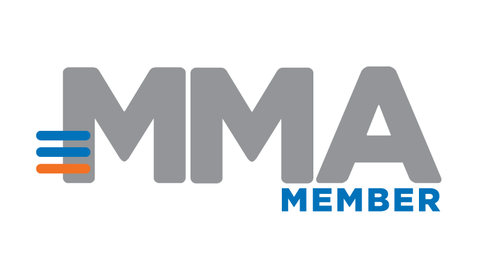May 9, 2006
![]()
Achieving Spontaneity: The Key to Mobile Marketing Campaigns that Work
By Tim Jemison, CEO, Zoove
There is an undeniable shift in the media consumption habits of Americans. We’re going online more than we’re tuning in. We’re texting, blogging, photographing and watching videos on our phones instead of just calling from them. We’re listening to podcasts instead of simply reading the newspaper. As a result, marketers are shifting their focus as well, finding new ways to create the dialogue between brands and consumers. This month Merrill Lynch downgraded its forecasts for traditional ad spending in newspapers, radio and broadcast media. At the same time, non-traditional forms of marketing – including mobile marketing, branded entertainment, and video-on-demand – are projected to grow at a compound annual rate of 14.8% to $253.7 billion in 2010 according to media research firm PQ Media in a report out this month.
There’s a reason why non-traditional marketing is so hot. New media – especially mobile media – offer brands a host of opportunities to connect with consumers in ways never before possible. Mobile media enables brands to deliver the closest thing to instant gratification. By simply pulling out a phone and reaching out, consumers can enter a contest, win a free soft drink, download a song – the possibilities are endless. But there’s another side of the equation as well.
Consumers can more easily tune out. Loosing touch with the consumer is now as easy as a click. A mobile URL is difficult, if not impossible to enter using a number pad. Text messaging requires users to open an application on their phone and enter two sets of numbers – one in the address field and one in the text field. While brands are closer than ever to consumers, it’s now easier for consumers to put them away.
The key to making mobile marketing work is to maintain the mobile users’ perception of spontaneity. The more planning that a consumer has to do to connect with a brand, the less likely he or she is to follow through with a response. Mobile technology has come a long way in making handsets easy to use, but there is still room for improvement. What if mobile users could simply dial a brand name (such as PEPSI) to enter a survey, win a prize or see the latest music video from Pepsi’s musical spokesperson?
Two companies are now championing such a solution. The first is Motricity, with its pound (#) dialing invocation. The second is Zoove, with its StarStar (**) dialing method. With pound dialing, users are sent to an IVR session to order ring tones and other consumable data. With StarStar dialing, data sessions are pushed directly upon request to the consumer’s handset. There’s no need for an IVR session.
When Zoove initially began engineering its technology, it conducted several focus groups to test user understanding of the pound (#) symbol versus dialing the Star (*) symbol. Test revealed that users found marketing messages such as “Dial #SPORTS” to actually means “dial number SPORTS.” In many cases, the consumer dialed only the corresponding numbers and not the “#” symbol. There’s a deep perception that the # symbol means both pound and number. Additionally, # is frequently used as a terminator in many IVR sessions. “Enter your account number followed by the # symbol,” for instance.
StarStar dialing works by letting mobile users invoke WAP and SMS messages by simply dialing * * (two stars) and then a vanity code (for example, **CBS, **Volvo or **Weather). Mobile users do not have to activate a browser or text application. Once a user dials the ** number and a brand name, the service connects them to the application and sends them the information they are requesting (via email, SMS or eventually WAP or MMS) or places them into the application to vote, give feedback, or view media.
Eliminating the step of opening a WAP browser or a text application will make consumer response easier, faster and simpler. It can also bridge the demographic gap. A recent study conducted by MRI/Mediamark and Frost and Sullivan tested Zoove’s StarStar dialing. Results of the study showed an 87 percent success rate in mobile users over the age of 35 using StarStar dialing.
There’s no denying that mobile marketing is hot. In addition to the forecasts from Merrill Lynch and PQ Media, Yahoo!, Coca-Cola and MSNBC all announced major mobile initiatives recently. While mobile marketing opens up many opportunities for brands, it is inherently limited by several factors. Mobile broadband is much slower than traditional broadband, the mobile screen is small and difficult for older users to read, and navigation is difficult and in many cases tedious. The way in which marketers overcome these challenges with technology and educational programs will have a lot to do with the future of the industry. Keeping mobile response fun, easy and interesting is the key to success.
TIMOTHY H. JEMISON
Chief Executive Officer, Zoove
Mr. Jemison is an accomplished communications and technology executive with proven success in entrepreneurship and launching and developing startup companies into viable commercial enterprises.
He has been a Director of Sales for Appiant Technologies (NASDAQ: APPS), a software applications and communications infrastructure organization providing hosted carrier class Unified Messaging solutions for service providers (Wireless, ISP, LEC's, ASP) and large enterprise customers. Customers included AT&T Wireless, Verizon Wireless and Verizon Landline.<?xml:namespace prefix = o ns = "urn:schemas-microsoft-com:office:office" />
Mr. Jemison served as Vice President of Operations and Chief Technology Officer for CollegeLink.com from September 1999 to May 2000. He was a Co-Founder and Chief Executive Officer for Online Scouting Network, Inc., an Internet-based athletic recruiting service. Mr. Jemison was featured on the cover of Success Magazine in November 1996, describing the $1.5 million angel investment he secured for OSN from 15 professional athletes.

